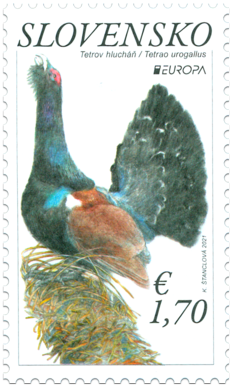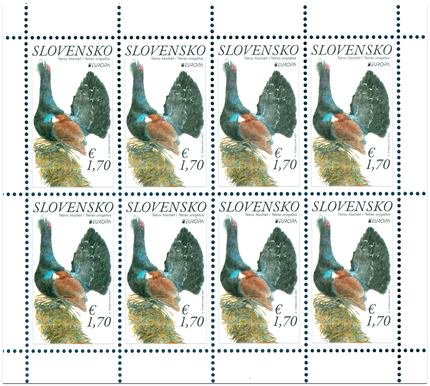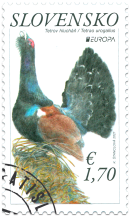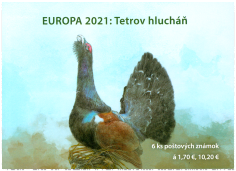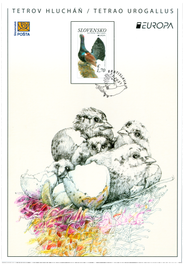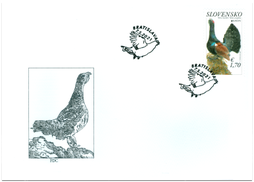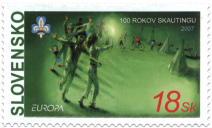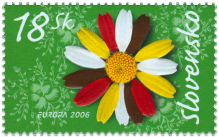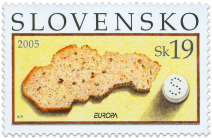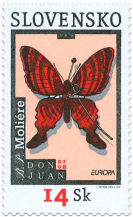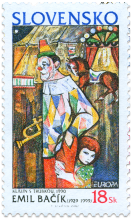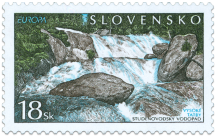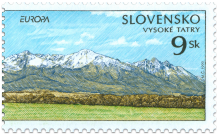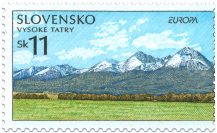741 Date of issue
07.05.2021 Face value
1.70 € Sell price
1.70 €
The western capercaillie is a mysterious creature that dwells in our most precious forests. Although it is rarely seen in the wild, it is a well-known bird, there is probably no historical film that portrays an aristocratic hunt that does not include a shot of this bird. Bearded men in green, noblewomen in light coloured walking dresses, horses, colourful forests with tall spruce trees, raspberry and blueberry bushes, all accompanied by the mating call of the western capercaillie – an almost iconic image that hardly connects with our era. The opulent hunts of the aristocracy have long since vanished from our forests. Only the timid and modest western capercaillie has survived.
The western capercaillie (Tetrao urogallus) is on the list of critically endangered species. Its population has dropped by 70 % over the last four decades. The bird is timid and leads a solitary life. It prefers mixed and coniferous forests that are well lit and provide a lot of shelter. It hunts for food by raking over the forest floor and harvesting the berries, needles and tiny insects it lives on. Dense spruce monocultures or clearings resulting from calamity logging are not a suitable environment for the capercaillie.
Unfortunately, those forests that are rarely visited by tourists and uninterrupted by logging or other human interventions are gradually disappearing. The capercaillie has become a symbol of a varied landscape full of life. Its last habitats can be found in our national parks. The Muránska Planina National Park, recently also acclaimed as one of the most beautiful national parks in Europe, is one of the last areas where you can find the bird in Slovakia. It is here that the importance of a varied landscape that is left almost untouched and only sensitively maintained can be seen. It is no amusement park but it tempts us with its variety, coniferous vegetation and colourful spring flowers and rowan berries, raspberries or blueberries; a place that enjoins you to quietly trek along the tourist paths, where the tourist can enjoy the genius loci, thinking that they might meet the capercaillie around the next corner or that the sound in the distance is its mating call. Although their expectations may not come true, their minds and hearts will be stimulated by the untouched landscape. Next time they might be lucky and meet the king of the last islands of European wilderness.
Jaroslav Hric
Similar products
455 Date of issue
28.05.2009
422 Date of issue
05.05.2008
397 Date of issue
30.05.2007
375 Date of issue
05.05.2006
353 Date of issue
22.04.2005
324 Date of issue
23.04.2004
295 Date of issue
09.05.2003
263 Date of issue
06.05.2002
234 Date of issue
05.05.2001
208 Date of issue
09.05.2000
177 Date of issue
05.05.1999
178 Date of issue
05.05.1999
© 2024 POFIS - Postal philatelic service. All rights reserved

